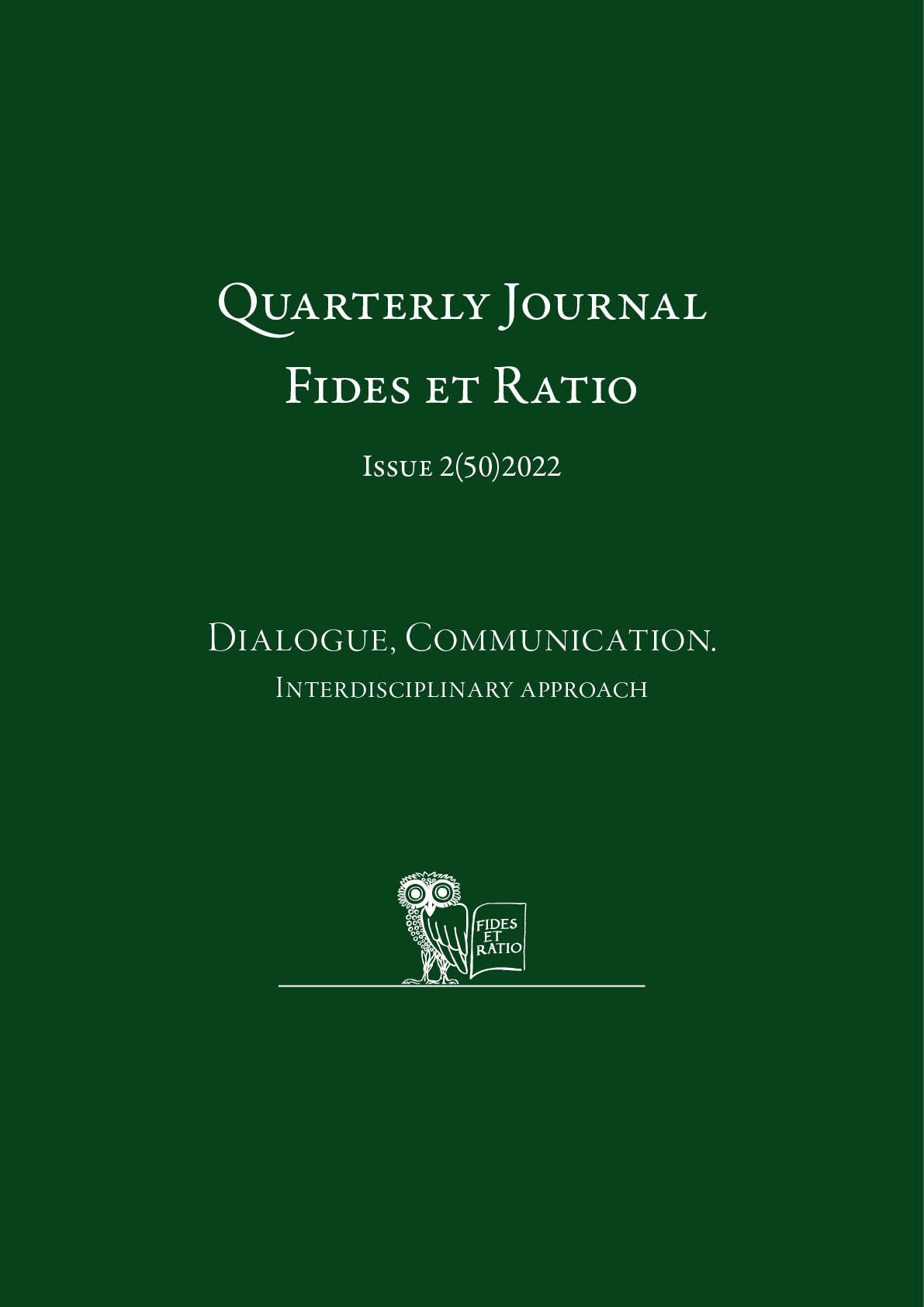Abstract
The pandemic continues to affect teaching and learning in higher education. Academys prefer a synchronous form of classes using videoconferencing. The frequently noticed non-use of webcams by students initiated the present study. The research presented in this article consists part of the broader discussion order ways of improving the educational process. The aim of the study is to identify the motives behind using webcams by students in distance learning and the meanings that lecturers and students attribute to switching them on. The research was conducted via an online questionnaire with open questions submitted by 119 students of pedagogy and psychology and their 19 academic teachers. Sample selection was random, not probabilistic. In this article we analyze the obtained research material using the method of objective hermeneutics. It turns out that most students interpret using webcams as positive, saying this favors increased involvement in classes, better communication and building relationships between students and lecturers. However, while some students experience using webcams as conductive of focusing attention, other report their effects of distraction as well as hindering the process of acquiring knowledge and developing competences. Commenting on the negative aspects, students indicate: violation of privacy, fear of assessing of their appearance and surroundings, feelings of being vulnerable to their photos being taken/their actions being recorded by other participants, who might then share the contents. The students also draw attention to difficulties resulting from technical problems and problems in separating personal space conductive to class participation. On the other hand, the lecturers mostly respond with indicated positive outcomes of using webcams : making contact real, increasing students' involvement, helping to establish positive relationships, improving communication and creating a good atmosphere in online classroom. However, they realize that compulsory webcams can also cause embarrassment and resistance.
References
Bailenson, J.N. (2021). Nonverbal overload: A theoretical argument for the causes of Zoom fatigue, Technology, Mind, and Behavior, 2(1). https://doi.org/10.1037/tmb0000030
Bedenlier, S., Wunder, I., Gläser-Zikuda, M., Kammerl, R., Kopp, B., Ziegler, A., Händel, M. (2021). Generation invisible?. Higher Education Students’ (Non)Use of Webcams in Synchronous Online Learning, International Journal of Educational Research Open, 2. https://doi.org/10.1016/j.ijedro.2021.100068
Bonanomi, F., F., Barello, S., Villani, D. (2021). Prevalence and health correlates of Onine Fatigue: A cross-sectional study on the Italian academic community during the COVID-19 pandemic, PloS One, 16(10), e0255181–e0255181. https://doi.org/10.1371/journal.pone.0255181
Brown, B. W., Liedholm, C. E. (2002). Can Web Courses Replace the Classroom in Principles of Microeconomics?, American Economic Review, 92 (2), 444-448. https://doi.org/10.1257/000282802320191778
Castelli, M.A., Sarvary, M.A. (2021). Why students do not turn on their video cameras during online classes and an equitable and inclusive plan to encourage them to do so, Ecology and Evolution, 11(8), 3565–3576. https://doi.org/10.1002/ece3.7123
Czepczyński, R., Kunikowska, J. (2020). Teaching nuclear medicine in the pandemic—a new challenge for the faculty, European Journal of Nuclear Medicine and Molecular Imaging, 47(9), 2075–2077. https://doi.org/10.1007/s00259-020-04865-0
Fabriz, S., Mendzheritskaya, J., Stehle, S. (2021). Impact of Synchronous and Asynchronous Settings of Online Teaching and Learning in Higher Education on Students’ Learning Experience During COVID-19, Frontiers in Psychology, 12, 733554–733554. https://doi.org/10.3389/fpsyg.2021.733554
Fruehwirth, J.C., Biswas, S., Perreira, K.M. (2021). The Covid-19 pandemic and mental health of first-year college students: Examining the effect of Covid-19 stressors using longitudinal data, Plos One, 16(3), e0247999. https://doi.org/10.1371/journal.pone.0247999
Gherheș, V., Șimon, S., Para, I. (2021). Analysing Students’ Reasons for Keeping Their Webcams on or off during Online Classes, Sustainability (Basel, Switzerland), 13(6), 3203. https://doi.org/10.3390/su13063203
Giesbers, R. B., Tempelaar, D., Gijselaers, W. (2013). Investigating the relations between motivation, tool use, participation, and performance in an e-learning course using web-videoconferencing, Computers in Human Behavior, 29(1), 285–292. https://doi.org/10.1016/j.chb.2012.09.005
Henriksen, D., Creely, E., Henderson, M. (2020). Folk Pedagogies for Teacher Transitions: Approaches to Synchronous Online Learning in the Wake of COVID-19, Journal of Technology and Teacher Education, 28(2), 201-209.
Hodges, C., Moore, S., Lockee, B., Trust, T., Bond, A. (2020). The Difference between Emergency Remote Teaching and Online Learning. Educause Review, (w:) https://er.educause.edu/articles/2020/3/the-difference-between-emergency-remote-teaching-and-online-learning (access: 9.04.2022).
Huckins, J. F., DaSilva, A. W., Wang, W., Hedlund, E., Rogers, C., Nepal, S. K., Wu, J., Obuchi, M., Murphy, E. I., Meyer, M. L., Wagner, D. D., Holtzheimer, P. E., Campbell, A. T. (2020). Mental health and behavior of college students during the early phases of the COVID-19 pandemic: Longitudinal smartphone and ecological momentary assessment study, Journal of Medical Internet Research, 22(6), e20185. https://doi.org/10.2196/20185
Kopp, M., Gröblinger, O., Adams, S. (2019) Five Common Assumptions That Prevent Digital Transformation at Higher Education Institutions. INTED2019 Proceedings, 13th International Technology, Education and Development Conference, Valencia, 11-13 March 2019, 1448-1457. https://doi.org/10.21125/inted.2019
Leszczyński, P., Charuta, A., Laziuk, B., Galazkowski, R., Wejnarski, A., Roszak, M., Kolodziejczak, B. (2018). Multimedia and interactivity in distance learning of resuscitation guidelines: a randomised controlled trial, Interactive Learning Environments, 26:2, 151-162. https: /doi.org/10.1080/10494820.2017.1337035
Lin, X., Gao, L. (2020). Students’ sense of community and perspective of taking synchronous and asynchronous online courses, Asian Journal of Distance Education, 15(1), 169–179.
McGinty, E. E, Presskreischer, R., Han, H., Barry, CL. (2020). Psychological Distress and Loneliness Reported by US Adults in 2018 and April 2020, JAMA. 324(1), 93–94. https://doi.org/10.1001/jama.2020.9740
Nadler, R.D. (2020). Understanding “Zoom fatigue”: Theorizing spatial dynamics as third skins in computer-mediated communication, Computers and Composition, 58, 102613.
Olson, J., Grinnell, L., McAllister, C., Appunn, F., Walters, K. (2012). Towards A Theoretical Model Of The Impacts Of Incorporating Webcams In Virtual Teams, Review of Business Information Systems (RBIS), 16(2), 73–88. https: /doi.org/10.19030/rbis.v16i2.6894
Racheva, V. (2018). Social aspects of synchronous virtual learning environments. AIP Conference Proceedings, 2048, 020032. https://doi.org/10.1063/1.5082050
Rose, S. (2020). Medical Student Education in the Time of COVID-19, JAMA, 323(21), 2131–2132. https: /doi.org/10.1001/jama.2020.5227
Swan, K., Shih, L. F. (2005). On the nature and development of social presence in online course discussions, Journal of Asynchronous learning networks, 9(3), 115-136. http://dx.doi.org/10.24059/olj.v9i3.1788
UNESCO (2021) COVID-19: reopening and reimagining universities, survey on higher education through the UNESCO National Commissions (w:) https://www.aau.at/wp-content/uploads/2021/06/Survey-Report-COVID-19-Reopening-and-Reimagining-Universities.pdf (access: 9.04.2022).

